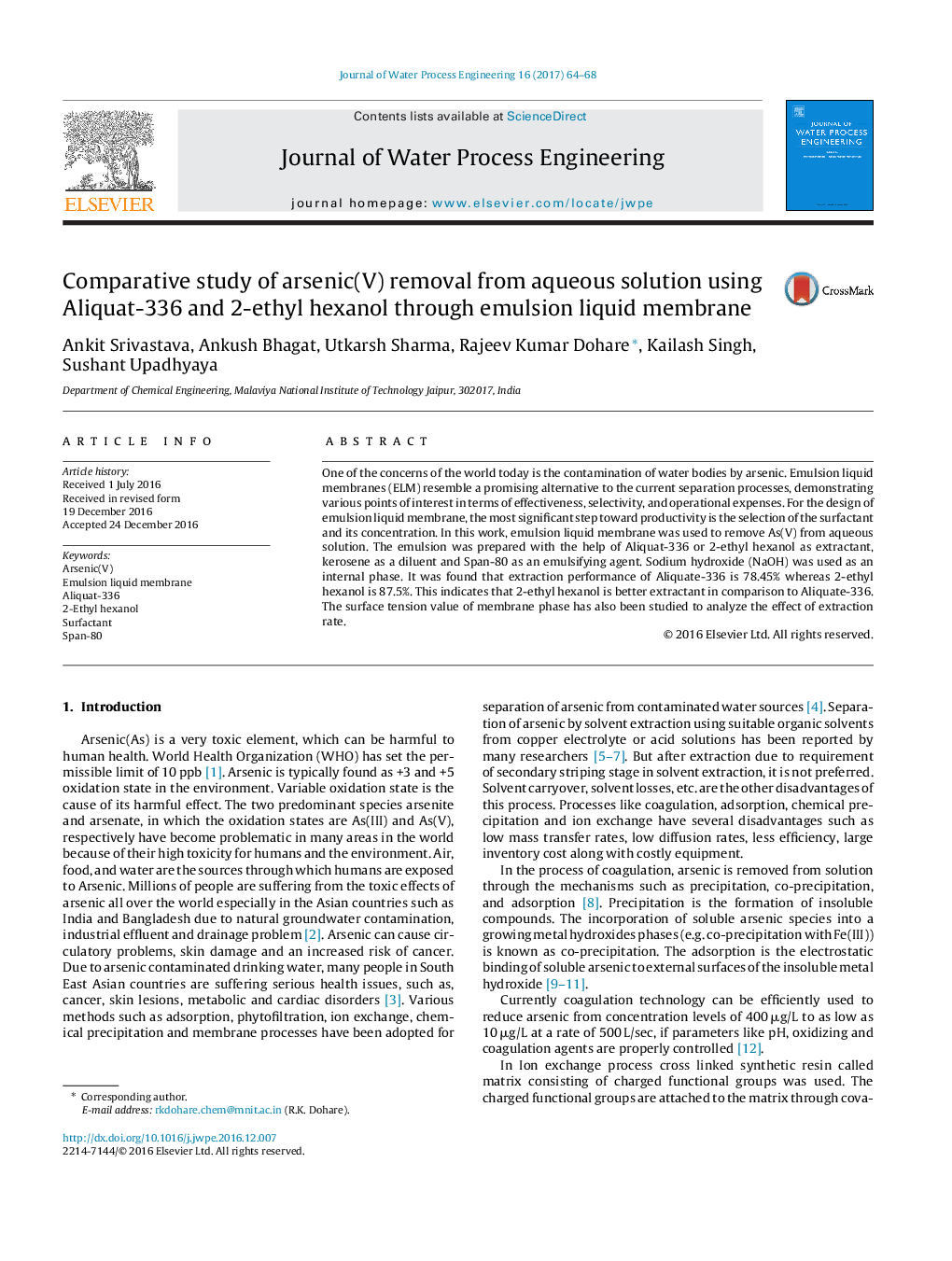| Article ID | Journal | Published Year | Pages | File Type |
|---|---|---|---|---|
| 4910057 | Journal of Water Process Engineering | 2017 | 5 Pages |
Abstract
One of the concerns of the world today is the contamination of water bodies by arsenic. Emulsion liquid membranes (ELM) resemble a promising alternative to the current separation processes, demonstrating various points of interest in terms of effectiveness, selectivity, and operational expenses. For the design of emulsion liquid membrane, the most significant step toward productivity is the selection of the surfactant and its concentration. In this work, emulsion liquid membrane was used to remove As(V) from aqueous solution. The emulsion was prepared with the help of Aliquat-336 or 2-ethyl hexanol as extractant, kerosene as a diluent and Span-80 as an emulsifying agent. Sodium hydroxide (NaOH) was used as an internal phase. It was found that extraction performance of Aliquate-336 is 78.45% whereas 2-ethyl hexanol is 87.5%. This indicates that 2-ethyl hexanol is better extractant in comparison to Aliquate-336. The surface tension value of membrane phase has also been studied to analyze the effect of extraction rate.
Related Topics
Physical Sciences and Engineering
Chemical Engineering
Chemical Engineering (General)
Authors
Ankit Srivastava, Ankush Bhagat, Utkarsh Sharma, Rajeev Kumar Dohare, Kailash Singh, Sushant Upadhyaya,
